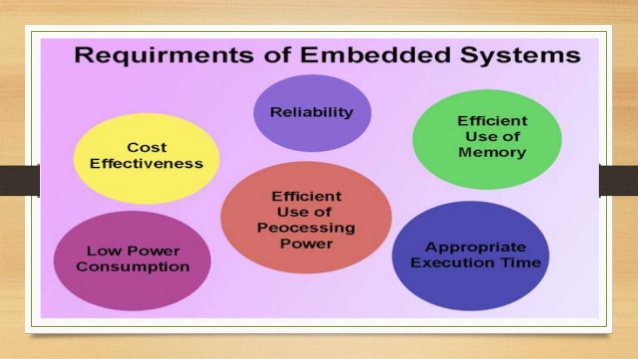5 Functional Attributes In Architecture Of Any Embedded System
Dear Readers,
In terms of a layman, any embedded system can be thought of as a computing system that is designed to serve a dedicated purpose. Unlike a general purpose computer that can perform a spectrum of tasks and is very complex, an embedded system is rather simplified and does not have unnecessary hardware. Embedded systems range from low end devices like calculators, smart cards, PDAs, sensors to high end devices like routers, cellphones and home appliances that are pervasive in our lives. Embedded systems are becoming increasingly interactive with the physical world causing the demand to migrate from standalone systems towards networked environments to escalate. But getting into the technicalities of an embedded system, the detail that must catch your eye as a beginner, is regarding the architectural model in embedded system design.
Architectural level information is physically represented in the form of embedded system structures-
- Defining executable specifications
- Testing and verification
- Design implementation
- Design simulation
A common practice in the development of a model based embedded system is to create and ratify a functional model before designing the embedded system architecture. Frequently used tools for this kind of an architecture modelling are Matlab/Simulink and Scade/Lustre. However, these embedded functionality tools are frequently used as they are better at providing possible codes, though less efficient to provide a suitable architecture. Any typical format of embedded structure is nothing but a conducive abstraction of its architecture, containing a set of required elements and properties. An architectural structure, therefore presents to us, a clear picture of the system’s hardware and software at design time or run time, given a particular environment. To validate design choices and effectively use the processing capacity of the system architectural analysis is something you must not do without. Model-based approach to determine the functional properties in embedded systems facilitates formal analysis, verification, validation and generation of embedded systems.
The architectural model focuses mainly on the structural rationale of functional blocks. To specify the behavior of each functional block so that it helps in formal modeling and analysis of embedded systems design its formal semantics and syntax are defined. Elucidation of system architecture is achievable by using the notations offered by Architecture Description Languages (ADLs).
To understand the functional behaviour of embedded system architecture, your approach should offer a better way to analyze, design, develop and maintain system architecture.
Categorizing the functional attributes in model-based embedded system design, the significant few are listed below-
- Security : The condition of being protected against any sort of loss, threat, damage or incomplete retrieval, defines security.
- Availability and Reliability : The system’s ability to deliver services that can be trusted every time they are used, maximizing the probability of correct service for a given duration of time.
- Data Quality : Quality of data refers to the non-functional properties of services at different levels.
- Real-time Performance : Performance has to go through a 3-D analysis based on responsiveness measured in terms of throughput and response time.
- Resource consumption : Utilization of resources can be grouped into memory, processing units, energy, communication and peripherals attached.
Taking into account the variability of tasks desired of any embedded system, this blog attempts to clarify your doubts regarding the importance of architecture modeling in embedded system design space.
Keep tuned to this space for more!
Author:
Harsha Thakur
Senior Technical Content Writer












Leave a Reply